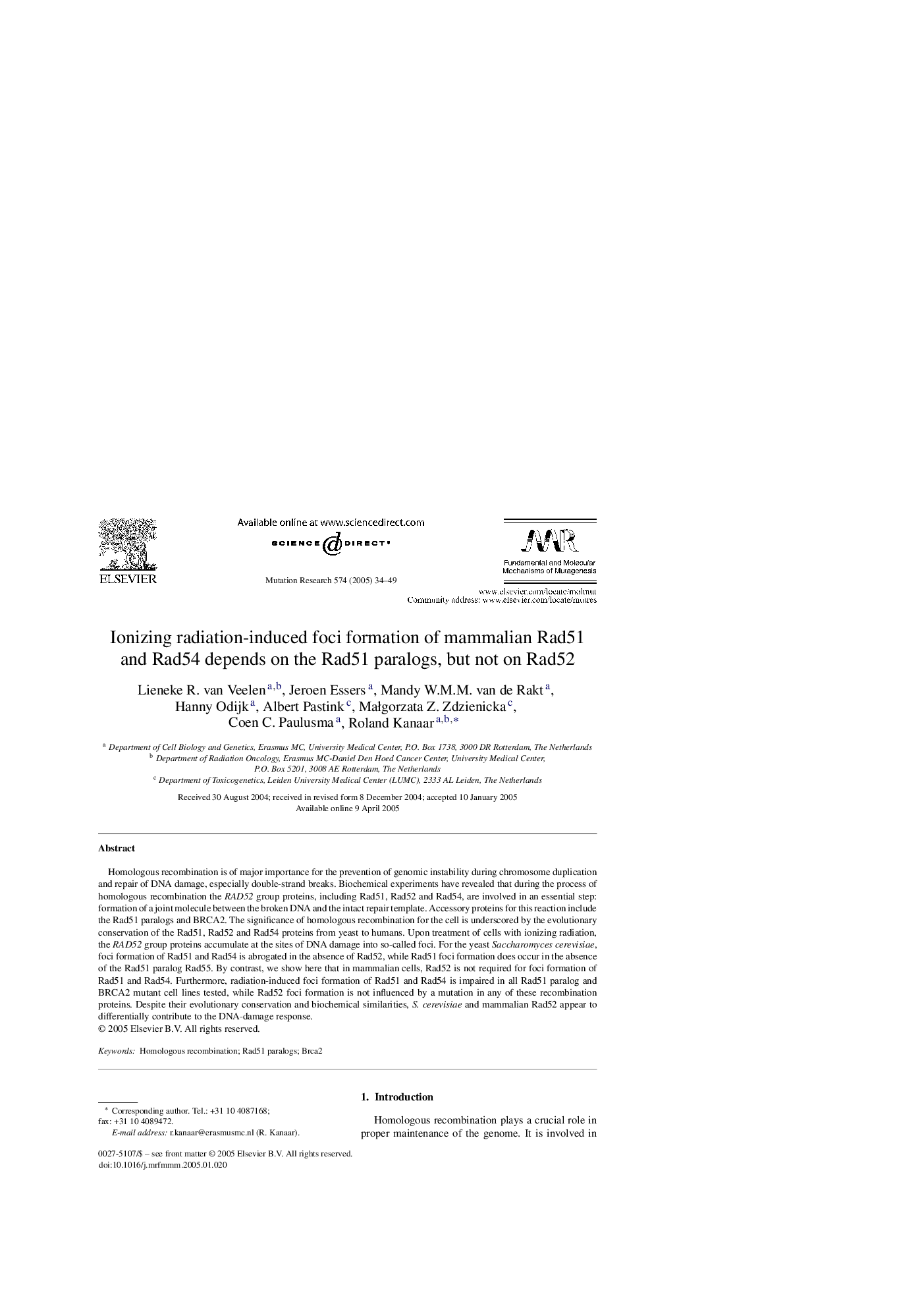| Article ID | Journal | Published Year | Pages | File Type |
|---|---|---|---|---|
| 9909099 | Mutation Research/Fundamental and Molecular Mechanisms of Mutagenesis | 2005 | 16 Pages |
Abstract
Homologous recombination is of major importance for the prevention of genomic instability during chromosome duplication and repair of DNA damage, especially double-strand breaks. Biochemical experiments have revealed that during the process of homologous recombination the RAD52 group proteins, including Rad51, Rad52 and Rad54, are involved in an essential step: formation of a joint molecule between the broken DNA and the intact repair template. Accessory proteins for this reaction include the Rad51 paralogs and BRCA2. The significance of homologous recombination for the cell is underscored by the evolutionary conservation of the Rad51, Rad52 and Rad54 proteins from yeast to humans. Upon treatment of cells with ionizing radiation, the RAD52 group proteins accumulate at the sites of DNA damage into so-called foci. For the yeast Saccharomycescerevisiae, foci formation of Rad51 and Rad54 is abrogated in the absence of Rad52, while Rad51 foci formation does occur in the absence of the Rad51 paralog Rad55. By contrast, we show here that in mammalian cells, Rad52 is not required for foci formation of Rad51 and Rad54. Furthermore, radiation-induced foci formation of Rad51 and Rad54 is impaired in all Rad51 paralog and BRCA2 mutant cell lines tested, while Rad52 foci formation is not influenced by a mutation in any of these recombination proteins. Despite their evolutionary conservation and biochemical similarities, S. cerevisiae and mammalian Rad52 appear to differentially contribute to the DNA-damage response.
Related Topics
Life Sciences
Biochemistry, Genetics and Molecular Biology
Cancer Research
Authors
Lieneke R. van Veelen, Jeroen Essers, Mandy W.M.M. van de Rakt, Hanny Odijk, Albert Pastink, MaÅgorzata Z. Zdzienicka, Coen C. Paulusma, Roland Kanaar,
